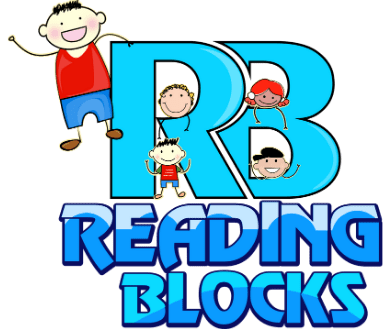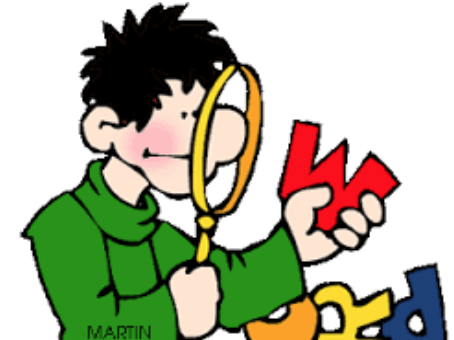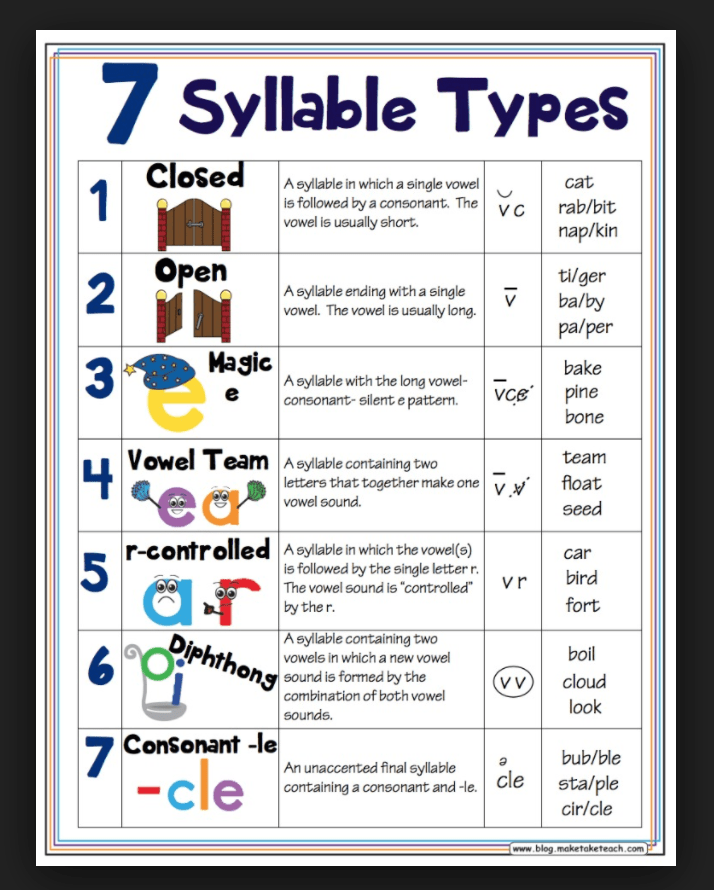Vocabulary activities are specific activities for increasing vocabulary skills. Vocabulary skills are necessary for understanding what you are reading. You can’t understand the material you are reading if you don’t understand the meaning of the words you are reading. This often happens in expository reading such as in the study of science. Science has very specific words that you don’t see every day and would need to study the vocabulary for the lesson.
Children who read a lot naturally have stronger vocabulary skills because they are exposed to many more words than children who avoid reading. A great strategy for improving vocabulary naturally is to read every day. Parents could read a story every day to their children as well which will exponentially increase vocabulary skills.
According to Linda Hoyt, vocabulary development is best enhanced when:
- The emphasis is on concepts rather than words;
- Students talk about experiences;
- Connections to prior knowledge are emphasized;
- Substantial periods of time are spent in independent reading.
Here are some of the best vocabulary activities that will help you to improve vocabulary skills in addition to reading every day.
Word Sorts
The Word Sort activity uses a grid that has a heading area and columns underneath the headings. There can be two or more headings depending on what you are teaching. You can use a word bank with this activity or a passage reading to fill in the columns.
For example, say you want to teach 5 new vocabulary words. Place each word in the heading section. Students can choose words out of a word bank that mean the same as the new word and place them in the appropriate column. The students could also read a passage and when they came across a word that had the same meaning as the heading word, they would write the new word in that column.
Word Sorts are a great tool to use in expository reading, concept understanding, spelling words and more.
This is a word sort to use with vocabulary words for fast, slow, big and small. Students can add words to the chart from any story they are reading. At the end of the month you will have a long list of new vocabulary words to choose from in addition to these words.
Fast
Sprightly
Slow
Leisurely
Big
Colossal
Small
Microscopic
Word Maps
A Word Map is visual graphic orgainizer and helps to understand the meaning of a word better. The word being studied is in the center of the graphic organizer and then other words are organized around it according to: means the same or synonym, opposite meanting or antonym, pictures, categories, definitions, etc. This helps to connect the word to many different files in the brain which makes it easier to remember and use.
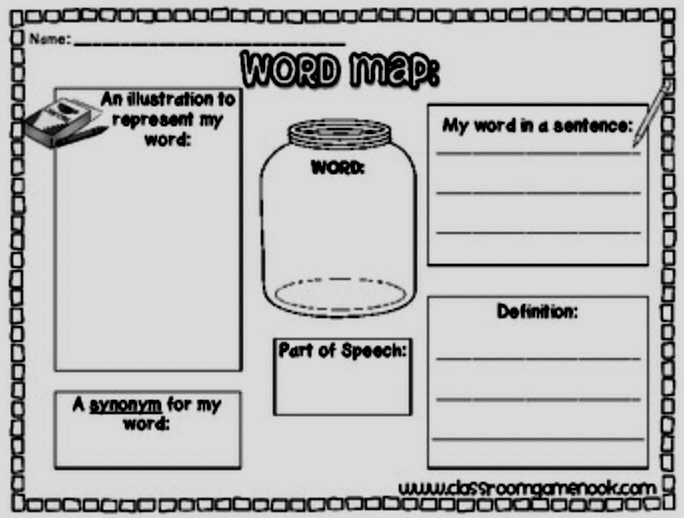
Feature Analysis
Feature Analysis uses a grid framework to help students understand key concepts that they are studying. This visual approach helps the brain to sort and organize material for better recall later. A Feature Analysis grid is a great tool to put on classroom walls for passive learning all day long.
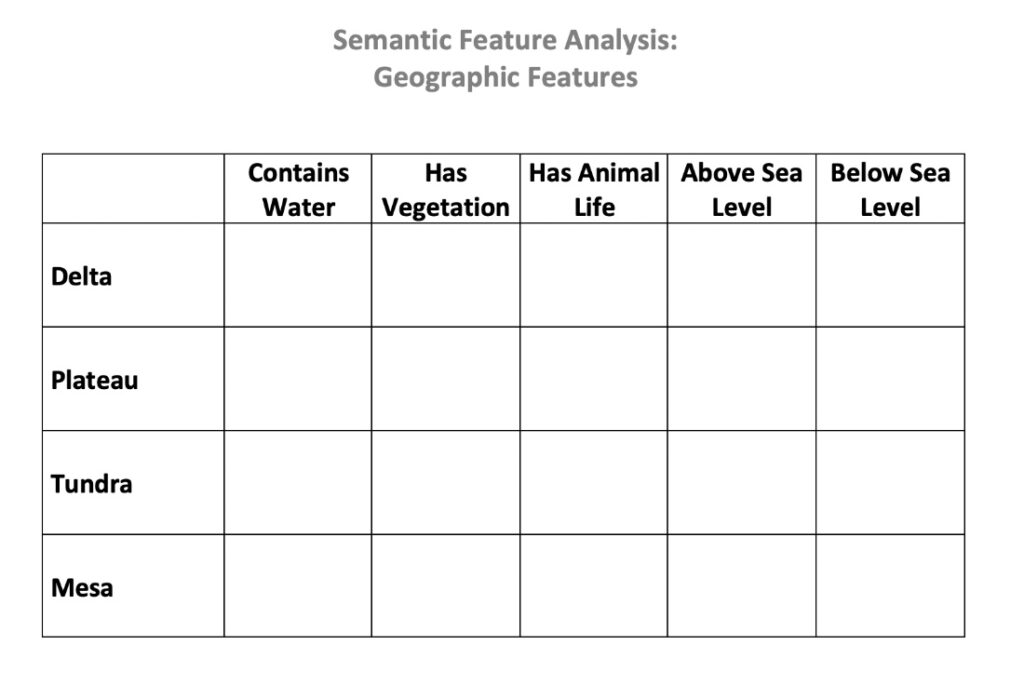
Connect Two
The Connect Two vocabulary activity involves choosing two words and listing all the ways that the two words are connected or similar. This helps the students to think more deeply into the meaning of the words.
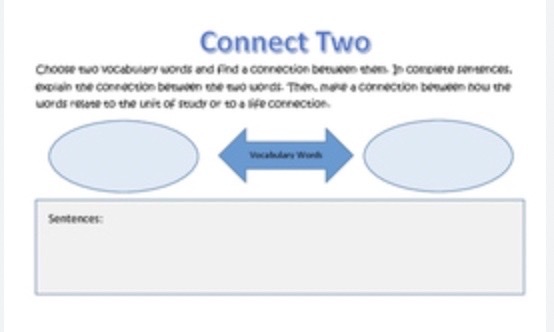
Concept Definition
Concept Definition is a way to categorize new concepts and vocabulary words into a visual form for better learning and recall.
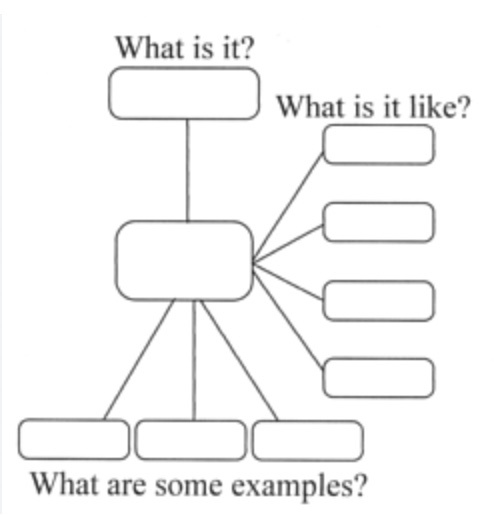
Content Word Board
A Content Word Board is a great passive learning tool as well as an organizational learning tool and can be used for many game activities for a fun review. You can choose words from a new theme, story, subject or concept. The board can be added to all year long depending on your what you are studying. While waiting in line your can play a quick game which engages students in the concepts throughout the day.
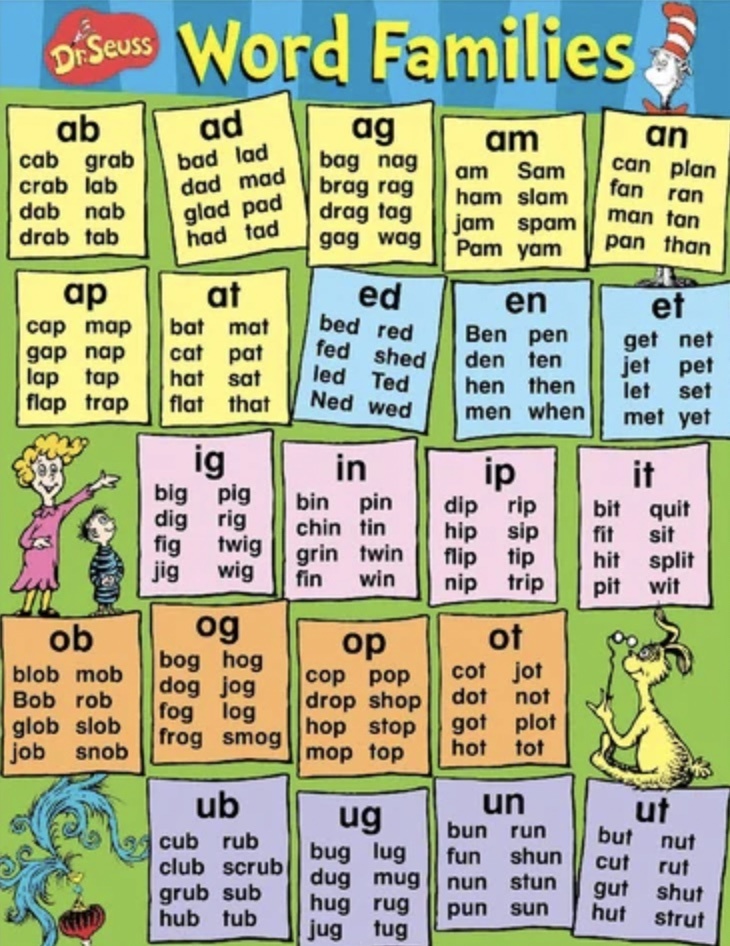
Word Bank
Word Bank Is a collection of words that you can go to and choose from. This can be used for building vocabulary by filling the word bank with synonyms for overused words. For example, you can have a word bank for “fast” and list 2o words that mean fast. You can list your word bank charts in alphabetical order around the classroom.
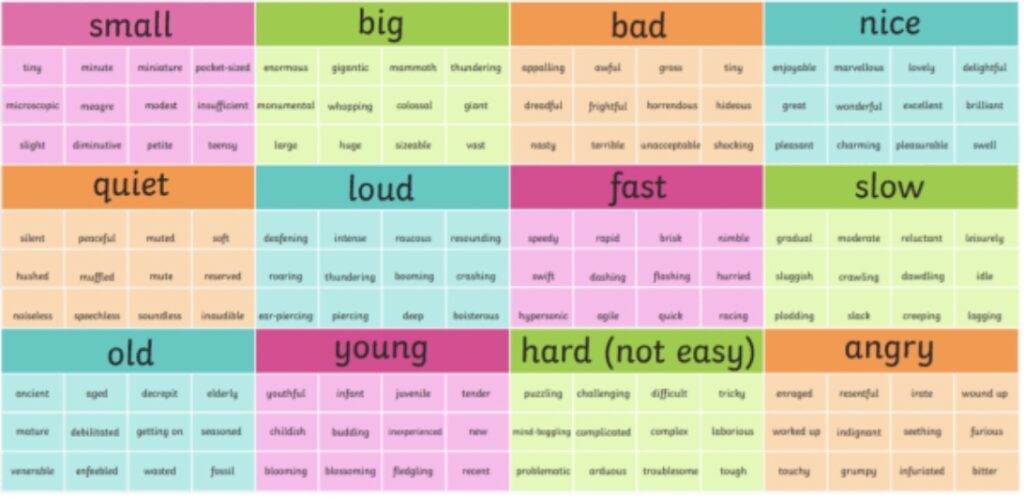
Words Around the Room
Words Around the Room is similar to the Word Bank but can be listed in alphabetical order. Vocabulary words can be added to the wall all year. You can use this word wall for writing, reading, and playing games.
More vocabulary strategies to use from Linda Hoyt:
- Semantic Association – brainstorm words associated with the new word
- Analogy – relating a new concept to a familar idea
- Context Clues – Find the meaning of an unknown word by clues in the passage
- Classificatioon – organizing words by category after creating a list of related words
- Cloze – Use context to determine which words might make sense for blank spaces in the passage
- Wordsplash – Create words and pictures to identify attributes of concepts or topic words
- Word Wizzards – Students report on their efforts to use or listen for tartet vocabulary words in contexts at home
- Draw A Word – One student draws a target word and other students attempt to guess what it is
- Charades – One or more kids act out the word and the others guess
- Word Theater – Similar to charades, teams of two act out word meanings for teammates to guess
- Word Replacement – Eliminate or underline one word from a sentence. Brainstorm other word options.
- Journal Words – Keep personal records of interesting words froom discussions, reading, and other learning experiences.
Choose a couple of these vocabulary activities and start today in building vocabulary skills for a smarter future!
